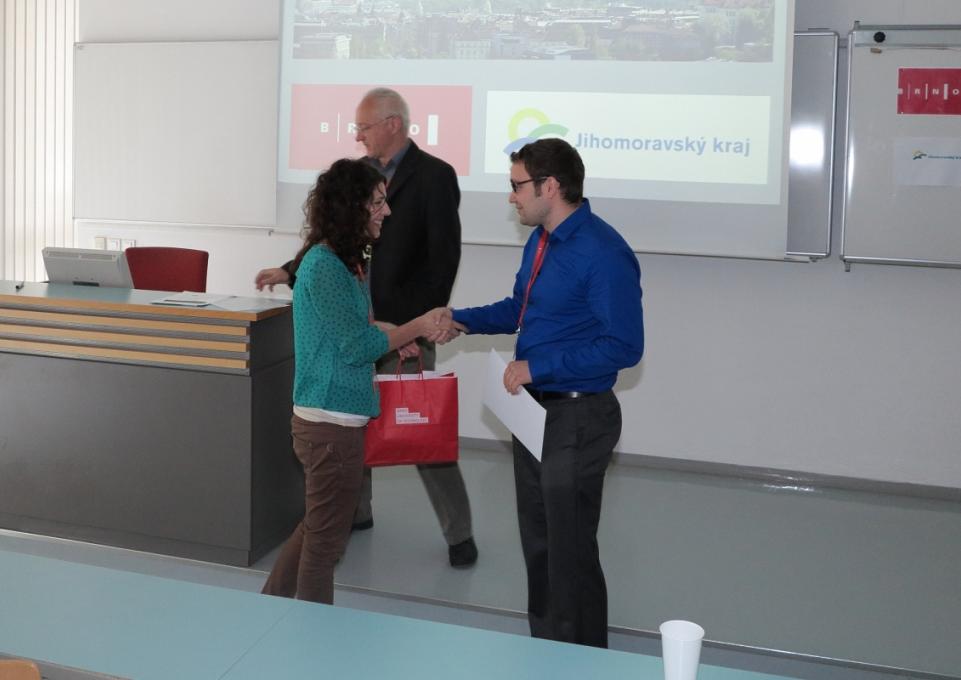
Buffalo State senior and mathematician Josh Terhaar (pictured right) received the Best Student Paper Award at the Brno University of Technology in the Czech Republic. The paper, which he wrote with Sean Kafer and Matthew Szczepankiewicz, University at Buffalo undergraduates, and Valentin Brimkov, professor of mathematics, was presented at the International Workshop on Combinatorial Image Analysis (IWCIA) in May 2014. "All the other student papers were written by graduate students," said Terhaar.
Combinatorics is a branch of mathematics; image analysis investigates and solves problems relating to images in applications that include medical imaging, defense, and biometrics such as fingerprint or face recognition.
The paper, "On Intersection Graphs of Convex Polygons," reflects a year of research undertaken by Terhaar, Kafer, and Szczepankiewicz. Brimkov, who served as the team’s mentor, said, "I regarded the three students more as younger, less experienced researchers than as students. From the beginning, our goal was to obtain new scientific results reaching the highest world standards."
The work was supported by an URGE to Compute grant from the National Science Foundation, which is a collaborative grant between Buffalo State and UB. Joaquin Carbonara, professor of mathematics, is the principal investigator at Buffalo State, which received a share of $300,000 from the grant. Terhaar and the other students received 2013 URGE to Compute grants, which provided each student with a $10,000 stipend, use of a laptop, access to the Center for Computational Research at UB, and funds for travel.
In spring 2013, they learned tools and methods to conduct and present mathematical research. In the summer, they spent eight hours a day for eight weeks to conduct their research. "In the fall," said Terhaar, "we worked on the paper. Dr. Brimkov’s assistance was critical because he understands the world of academic presentation and publication."
Terhaar said the collaboration among the students was both difficult and rewarding. "We came up with an algorithm for data that can be modeled by convex polygons," said Terhaar. "We had different interests and strengths. I worked on the basic technique of the algorithm and coded the first version. Matt and Sean worked on improving it and generalizing it for all convex polygons." The algorithm the team developed has multiple potential applications.
Brimkov is an internationally renowned expert in combinatorial image analysis. He said, "The reviewing process [of the papers] was quite rigorous, including at least three independent reviews per paper by highly qualified members of the international program committee." Brimkov was one of three keynote speakers at the IWCIA; its proceedings have been published by Springer in Combinatorial Image Analysis: 16th International Workshop, IWCIA, 2014.
In addition to the study of pure math, Terhaar is interested in philosophy. "I'm a dual major in math and philosophy with a minor in religious studies," he said. "Math and philosophy have a lot in common—they both involve abstract concepts and logic. Philosophy and religious studies address our most fundamental questions: why are we here, and what is a good life?" For him, part of the answer is pursuing the study of pure math—particularly number theory and set theory— in the mathematics doctoral program at UB next year.
Pictured: Terhaar (at right) receives the Best Student Paper Award at the International Workshop on Combinatorial Image Analysis held at the Brno University of Technology in the Czech Republic.
